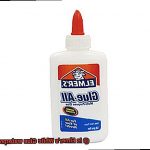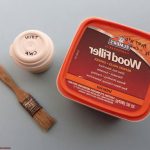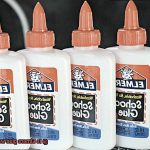Do you still have your trusty Elmer’s glue from your elementary school days? Or are you a frequent user of this popular adhesive for various arts and crafts projects? If so, you might have wondered whether Elmer’s glue is water-soluble even after it dries.
Elmer’s glue has been a go-to adhesive for decades, thanks to its versatility and strength. But what happens if your project gets wet or accidentally spills on water after it has dried? Will the glue dissolve and ruin all your hard work?
Well, wonder no more. In this blog post, we will explore whether Elmer’s glue is water-soluble after it dries. We’ll delve into the science behind the glue’s chemical composition and explain the factors that influence its solubility. Moreover, we’ll discuss some practical tips on how to prevent your glued projects from falling apart in case they come into contact with water.
Whether you’re an avid DIY enthusiast or just a curious individual, this blog post is definitely worth reading. So keep scrolling to learn more about the water solubility of Elmer’s glue and how it affects your crafting projects.
Does Elmer’s Glue Dry Water-Soluble?
Contents
One of the most common questions about this popular glue is whether it dries water-soluble, and the answer is a resounding yes.
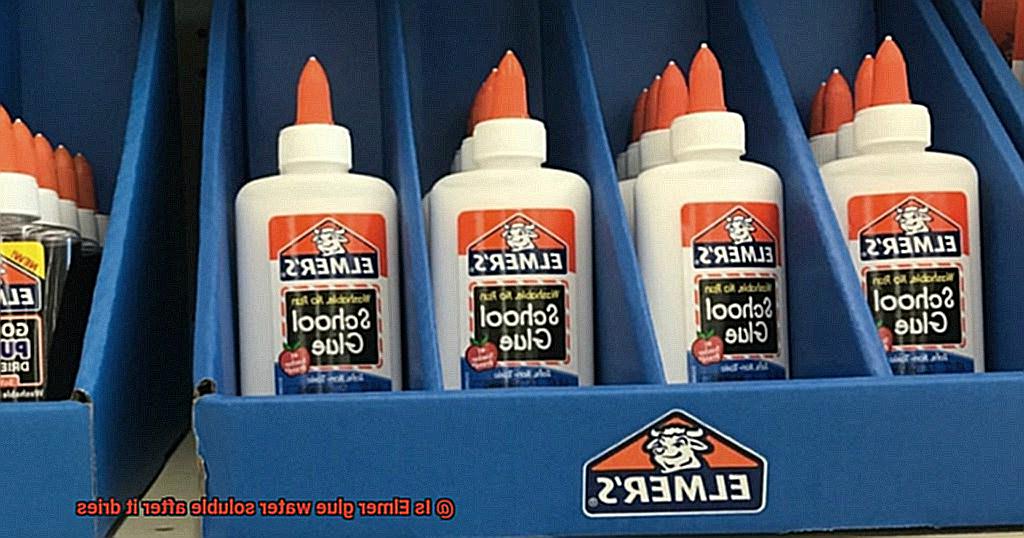
When we say that Elmer’s Glue dries water-soluble, we mean that it can be dissolved or reactivated with water. This feature makes it incredibly easy to clean up if you accidentally spill or make a mistake while using the glue. You won’t have to worry about leaving any unwanted residue behind.
It’s essential to note that the level of water solubility may vary depending on the type of Elmer’s Glue used. For instance, the classic white school glue is highly water-soluble and can easily be washed away with soap and water. However, some of the other Elmer’s Glue products, such as wood glue or super glue, may not be as water-soluble and require a different method of removal.
But, the benefits don’t stop there. Besides being easy to clean up with water, the water solubility of Elmer’s Glue also makes it an excellent option for certain types of projects. Suppose you’re creating a temporary art project that you plan on taking down eventually. In that case, using Elmer’s Glue will make it easier to remove without damaging the surface underneath.
However, it’s important to note that removing Elmer’s Glue from certain surfaces, such as fabrics or porous materials, can be a bit challenging. The glue can seep into the fibers of the material and dry, making it hard to fully remove. But don’t fret. There are a few tips and tricks that can help make removing Elmer’s Glue easier. For example, soaking the affected area in warm water for several hours can help loosen the glue and make it easier to remove. Additionally, using a mild detergent or vinegar solution can also help break down the glue and make it easier to clean up.

Challenges of Removing Elmer’s Glue from Certain Surfaces
Elmer’s glue is a go-to adhesive for many projects, but removing dried glue from certain surfaces can be a tough task. The challenge lies in the fact that Elmer’s glue is not completely water-soluble after it dries. While it may dissolve in water to some extent, it can leave behind a residue or become hardened on many surfaces.
One of the most challenging surfaces to remove dried Elmer’s glue from is fabric. When glue gets on clothing or upholstery, it can be incredibly difficult to remove without causing damage. In some cases, the glue can even bond with the fabric fibers, making it almost impossible to remove without leaving a stain. Warm water and mild detergent can help, but may still leave behind a residue or stain.
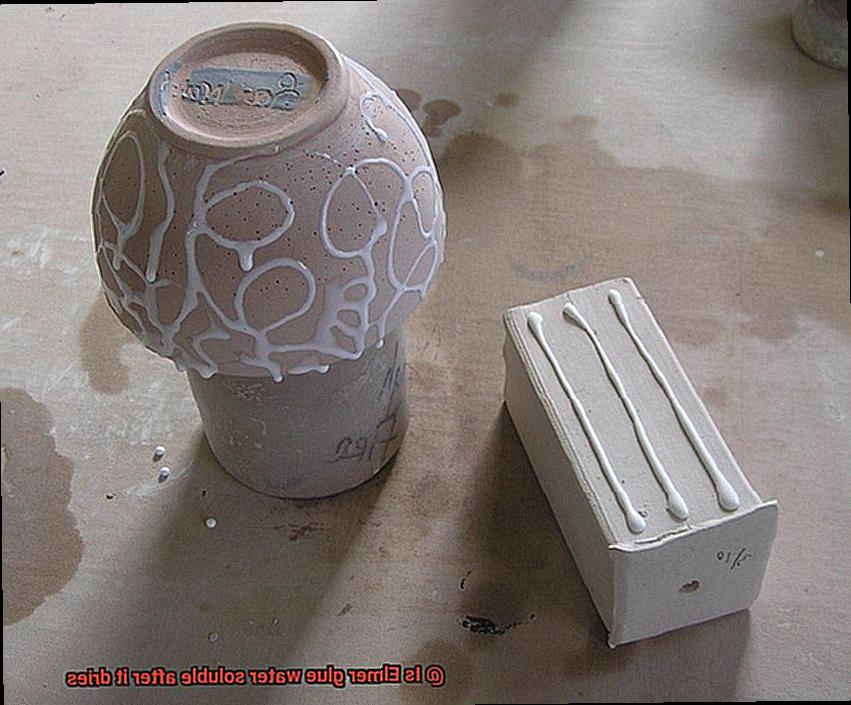
Removing dried Elmer’s glue from wood surfaces can also be tricky. If left on for too long, the glue becomes hardened and almost impossible to scrape off without damaging the wood underneath. This is especially true for porous woods like oak or mahogany, where the glue can seep into the grain and become lodged. Careful scraping or sanding may be necessary, but extra care should be taken not to damage the wood surface.
Plastic surfaces also pose a challenge when removing dried Elmer’s glue. Depending on the type of plastic, the glue may not adhere well or could even melt and deform the surface when removed with solvents or heat. In some cases, specialized plastic adhesives or abrasives may be required to avoid damaging the plastic surface.
Tips and Tricks for Easier Removal of Elmer’s Glue
Elmer’s glue is a popular adhesive that can be found in most households and schools. However, removing dried Elmer’s glue can be a daunting task, especially when it sticks to fabrics, carpets, or other surfaces. Fortunately, there are several tips and tricks that you can use to make the removal of Elmer’s glue much easier.
Soak in Warm Water
Elmer’s glue is water-soluble, which means that it dissolves in water. If you have a small amount of dried glue on a surface, soaking it in warm water for a few minutes can help loosen the glue and make it easier to remove. You can also use a damp cloth or sponge to rub the affected area gently. This method is perfect for small areas with dried glue that are easy to access.
Vinegar or Rubbing Alcohol
If warm water is not enough to remove the dried glue, you can try using vinegar or rubbing alcohol. These substances can help dissolve the glue and make it easier to wipe away. Simply apply some vinegar or rubbing alcohol to a cloth or sponge and rub the affected area gently. However, be sure to test these solutions on an inconspicuous area first to ensure they do not damage the surface.
Petroleum Jelly
Petroleum jelly can also be effective in removing dried Elmer’s glue. Apply a small amount of petroleum jelly to the affected area and let it sit for a few minutes. Then, use a cloth or sponge to wipe away the glue gently. This method is perfect for larger areas with dried glue because you can apply petroleum jelly over a wider surface area.
Commercial Adhesive Remover
If none of the above methods work, you can try using a commercial adhesive remover specifically designed for Elmer’s glue. These products are available at most hardware stores and can be very effective in removing even the toughest glue stains. However, make sure to read the instructions carefully and follow them precisely to avoid causing damage to the surface.
Prevention is Key
Prevention is key when it comes to removing Elmer’s glue. If possible, try to avoid getting the glue on surfaces that are difficult to clean, such as fabrics or carpets. And if you do accidentally spill some glue, try to clean it up as quickly as possible before it has a chance to dry and set. This will make the removal process much easier and less time-consuming.
Advantages of Using Water-Soluble Glue
This type of glue boasts several advantages that make it a popular choice for a wide range of applications.
One of the most significant advantages of water-soluble glue is its effortless clean-up. Its ability to dissolve in water means that any excess glue can be quickly wiped away with a damp cloth or sponge. This makes it perfect for classrooms, workshops, and other settings where messes are common.
But wait, there’s more. Unlike other glues that may contain harmful chemicals, water-soluble glue is non-toxic and safe for use by children. Made from natural ingredients, this adhesive is both environmentally friendly and gentle on the skin.
Another advantage of water-soluble glue is its clear drying properties. This feature is particularly crucial for arts and crafts projects where the appearance of the glue matters. Water-soluble glue can be used to bond paper, cardboard, fabric, and other materials without leaving any visible residue.
And if you need a thinner consistency for your project, simply dilute water-soluble glue with water. This makes it ideal for bookbinding or any application where a thin layer of adhesive is required.
How to Test if a Glue is Water-Soluble or Not
Water-soluble glue is a type of adhesive that can be dissolved in water. This makes it a popular choice for many crafting projects, as well as for school assignments and repairs. When the glue comes into contact with water, it breaks down and loses its adhesive properties, making it easy to remove from surfaces.
Is Elmer’s Glue Water-Soluble?
Yes. Elmer’s glue is a water-based adhesive, which means that it can be easily dissolved in water even after it has dried. To test if a glue is water-soluble or not, you can perform a simple experiment with a damp cloth or sponge. If the glue starts to dissolve and come off the surface, then it is water-soluble.
How to Test for Water-Solubility
There are a few simple ways to test if a glue is water-soluble or not. One way is to place a small amount of the dried glue in a container of water. If the glue dissolves in the water and becomes milky or cloudy, then it is most likely water-soluble. Another way is to wet a cotton swab or cloth with water and gently rub it on the dried glue. If the glue starts to soften or dissolve, then it is likely water-soluble.
Removing Water-Soluble Glue
While water-soluble glue may dissolve in water, it can still be challenging to fully remove from certain surfaces such as fabrics or porous materials. Soaking the affected area in warm water for several hours can help loosen the glue and make it easier to remove.
Using a mild detergent or vinegar solution can also help break down the glue and make it easier to clean up.
It’s important to note that some types of glue may be partially water-soluble, meaning they may dissolve in water but leave behind a residue or film. In these cases, it may be necessary to use a stronger solvent or cleaner to fully remove the glue.
Importance of Testing Water-Solubility
Testing if a glue is water-soluble or not can help determine how easily it can be removed or cleaned up. This information can be especially useful for crafting projects or repairs where the glue may need to be removed or replaced in the future. Always remember to check the label of the glue before using it and conduct a small test before applying it on any surface to avoid any unwanted results. With these tips and tricks, you’ll be able to determine if your glue is water-soluble and how best to remove it if necessary.
Alternatives to Elmer’s Glue
While it’s a popular choice, there are plenty of alternatives available to suit your needs and preferences.
One great option is white school glue, also known as PVA glue. It’s water-soluble when wet, just like Elmer’s Glue, but it dries to a stronger bond. Plus, it’s non-toxic and safe for children to use. The only downside is that it may not be as easy to find in some areas. But don’t let that discourage you from exploring this stronger adhesive option.
Clear drying glue is another alternative, such as Aleene’s Original Tacky Glue. It dries clear and remains flexible, making it perfect for projects that require some give. It also has a strong hold and can be used on a variety of surfaces.
However, it may not be as suitable for younger children due to its stronger hold and potential messiness. But for more advanced crafters or projects requiring a little extra oomph, this could be the perfect solution.
If you’re looking to reduce your environmental impact, there are several natural adhesives available. One option is homemade glue made from flour and water. This simple mixture can be used for paper crafts and dries clear. Another option is plant-based glue made from ingredients such as potato starch or soy protein. These natural adhesives may not have the same strength as traditional glues, but they offer a more sustainable option for those looking to go green with their crafting supplies.
iyUdetcpB0g” >
Also Read: Is Elmer’s Glue Waterproof?
Conclusion
To sum it up, Elmer’s glue can be easily dissolved in water after it dries. This feature makes it a go-to choice for crafters and DIY enthusiasts who want an adhesive that is easy to clean up. However, removing dried Elmer’s glue from certain surfaces like fabrics or wood can be a bit of a challenge. But don’t worry, there are plenty of helpful tips and tricks available to make the process less daunting.
Water-soluble glue has several advantages over other types of adhesives. It is eco-friendly, non-toxic, and simple to clean up. Moreover, its transparent drying properties make it perfect for projects where the appearance of the glue matters.
If you’re looking for alternatives to Elmer’s glue, there are many options available such as white school glue or clear drying adhesive. You can also opt for natural adhesives made from flour or plant-based ingredients for a more sustainable option.
To sum it all up, understanding the water solubility of Elmer’s glue is crucial for anyone who uses this popular adhesive in their crafting projects or repairs.


